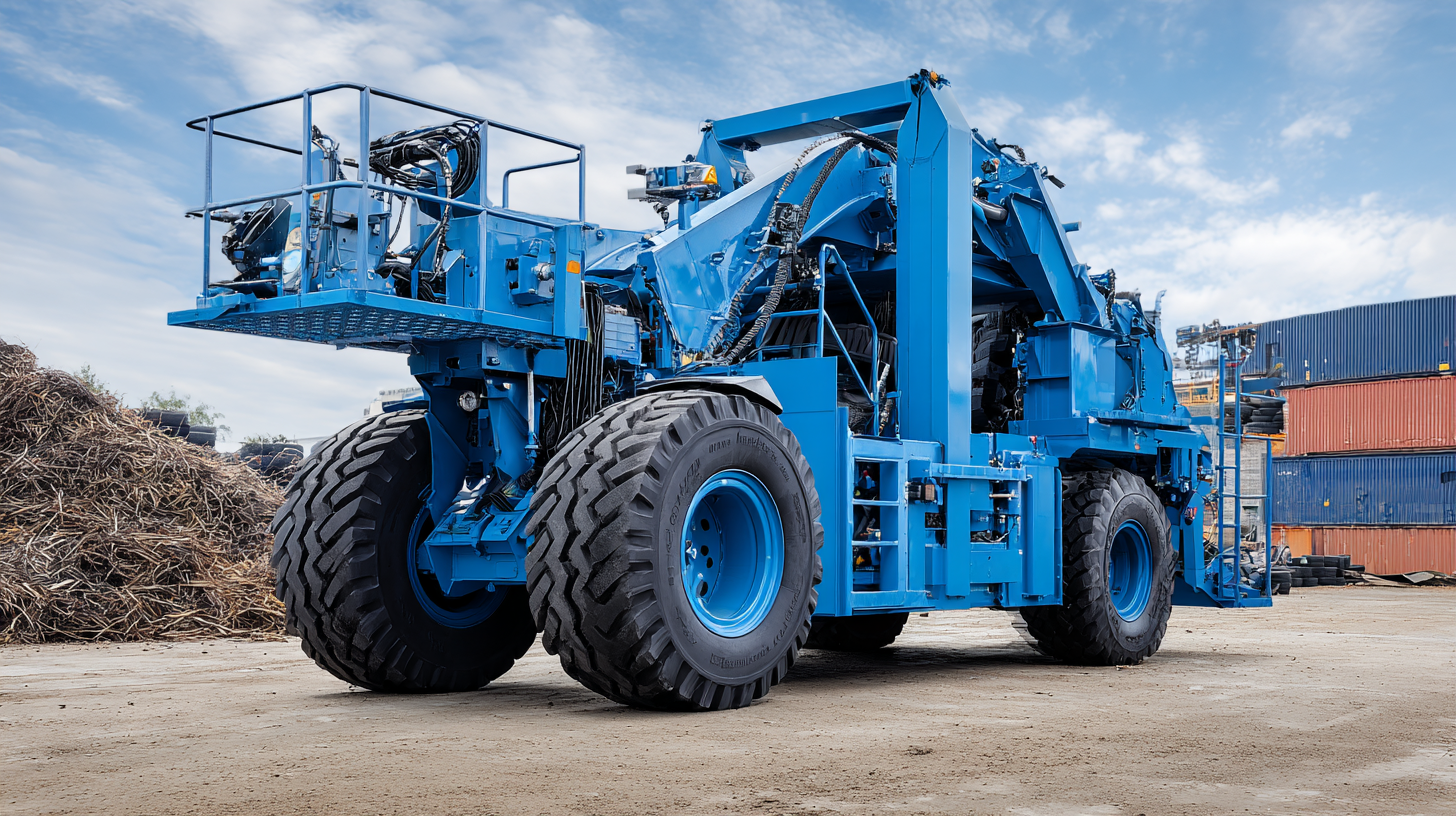As the global demand for sustainable waste management solutions increases, the Tire Shredding Machine has emerged as a pivotal technology in recycling and materials recovery. According to a recent market analysis by MarketsandMarkets, the tire recycling industry is projected to reach USD 6.2 billion by 2025, driven by the growing awareness of environmental issues and stringent regulations promoting recycling. Tire shredders play a crucial role in this sector, efficiently processing scrap tires into reusable rubber crumbs, which can be utilized in various applications such as asphalt production, playground surfaces, and automotive components.

Additionally, advancements in tire shredding technology have increased throughput and energy efficiency, making these machines indispensable for industries seeking eco-friendly alternatives. As global buyers continue to explore and invest in innovative waste management solutions, understanding the distinct features and applications of Tire Shredding Machines will be essential for successfully navigating this evolving market landscape.
The recycling industry has witnessed a significant transformation over the past decade, with tire shredding machines emerging as pivotal players in the waste management ecosystem. According to a report by Grand View Research, the global tire recycling market is expected to reach USD 6.36 billion by 2025, reflecting a compound annual growth rate (CAGR) of 4.8%. This growth underscores the increasing emphasis on sustainable practices, where tire shredding machines serve a dual purpose: facilitating the recovery of valuable materials while mitigating environmental hazards posed by discarded tires.
As tire waste continues to pose a challenge worldwide, the demand for efficient tire shredding solutions is surging. Studies indicate that approximately 1.5 billion tires are discarded annually, with only 20% undergoing recycling processes. By employing tire shredding machines, companies can convert scrap tires into crumb rubber, which can be utilized in various applications, from road construction to sports surfaces. The ability to repurpose tires not only reduces landfill waste but also creates new economic opportunities, positioning tire shredding machines as an essential asset in the movement toward a circular economy.
Modern tire shredding machines play a pivotal role in enhancing efficiency in the tire recycling industry. These machines are specifically designed to process used tires, breaking them down into granulate sizes suitable for various applications. Advanced features such as high-speed blades, adjustable cutting settings, and integrated screening systems ensure optimal particle size, which is crucial for further processing and recycling methods like pyrolysis. With innovations like molten salt thermal treatment, manufacturers are significantly improving heat transfer efficiency, thus reducing energy inputs and operational costs.
The performance of tire shredding machines is not only determined by their mechanical capabilities but also by their adaptability to different tire types and recycling processes. For instance, recent advancements have led to the development of machines that can easily handle heavy-duty tires, which are projected to capture a substantial share of the market in the coming years. As the global tire recycling market expands, the need for versatile and efficient tire shredding solutions becomes increasingly clear, providing significant opportunities for manufacturers and end-users alike.
Tire shredding technology has emerged as a vital solution across various industries, primarily due to its ability to recycle and repurpose waste tires. In the automotive industry, shredded tires serve as an important raw material for producing rubberized asphalt, enhancing the durability and longevity of road surfaces. This application not only helps in waste minimization but also reduces noise pollution, contributing to more sustainable urban development.
Moreover, tire shredding machines find significant applications in the energy sector. Shredded tire materials can be utilized in waste-to-energy plants, where they are converted into fuel for producing electricity. This alternative energy source helps in reducing reliance on traditional fossil fuels, aligning with global sustainability goals. Additionally, the construction industry leverages shredded tires in lightweight fill applications—offering a cost-effective, environmentally friendly material for various building projects. These diverse applications showcase the transformative impact of tire shredding technology across multiple sectors, driving innovation and promoting environmental sustainability.
| Feature/Application | Description | Industry | Benefits |
|---|---|---|---|
| Tire Recycling | Processes used tires into granules or chips for reuse. | Recycling Industry | Reduces landfill waste, reclaims valuable materials. |
| Rubber Asphalt | Integrates shredded tire rubber into asphalt for improved durability. | Construction Industry | Enhances pavement quality, reduces maintenance costs. |
| Sporting Surfaces | Provides material for artificial turf and playgrounds. | Sports & Recreation | Improves safety, enhances performance, and provides cushioning. |
| Energy Generation | Uses tire-derived fuel (TDF) in energy production plants. | Energy Sector | Reduces reliance on fossil fuels, provides a cost-effective energy source. |
| Civil Engineering | Utilizes shredded tires in landfills and embankments. | Civil Engineering | Improves soil drainage, provides lightweight fill material. |
The global tire shredding equipment market is witnessing significant innovations and trends that cater to the growing demand in various sectors. With the worldwide solid tire market projected to expand from $31.9 billion in 2024 to $44.6 billion by 2032, this growth invites advancements in tire recycling technologies. The increasing focus on sustainability and recycling initiatives is pushing manufacturers to enhance the efficiency and effectiveness of tire shredding machines, making them a pivotal asset for businesses looking to minimize waste.

In parallel, the Off-the-Road (OTR) tire market is also on an upward trajectory. As the construction and mining sectors continue to expand, the value of the global OTR tire market is expected to reach $4.8 billion in 2024, with a compound annual growth rate (CAGR) of 6.1% from 2025 to 2034. This surge emphasizes the need for robust tire processing solutions, further driving the demand for advanced tire shredding machinery that can cater to larger volumes and varying tire types.
Overall, the synergy between market growth and technological advancements in tire shredding equipment positions these machines as essential tools for global buyers navigating the evolving landscape of tire management.
Tire shredding machines play a pivotal role in promoting sustainability by transforming waste tires into valuable raw materials through eco-friendly practices. According to the Environmental Protection Agency (EPA), approximately 300 million tires are discarded annually in the United States alone, representing a significant environmental challenge. Tire shredding not only reduces this waste but also creates opportunities for recycling and reuse, as shredded tires can be repurposed into products such as rubberized asphalt, playground surfaces, and even fuel for energy generation.

The global tire recycling market is expected to reach a value of $9.24 billion by 2027, driven by the increasing demand for sustainable materials. Additionally, a report by Transparency Market Research highlights that about 70% of end-of-life tires can be effectively recycled, showcasing the immense potential of tire shredding in waste management. By investing in advanced tire shredding technology, companies are not only addressing environmental concerns but also contributing to the circular economy, paving the way for a greener future. As eco-conscious consumers and regulatory frameworks drive this trend, the tire shredding industry is poised for significant growth and innovation.
